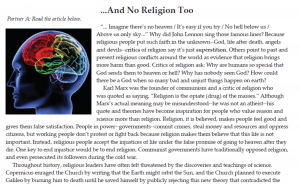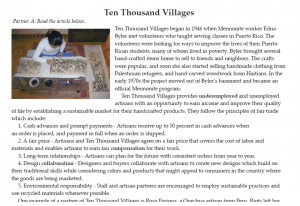by Mike Guest
University of Miyazaki (Miyazaki, Japan)
John Spiri. (2010). Self-published/RIC Publications.
ISBN: 4-931424-15-5 100 Pages
Content-based ELT textbooks tend to be of two types. First are those which are ESP-oriented: for medical students, the travel industry, business students and the like. The other category tends to be those which are issue-focused, often written because the authors have a particular social or political interest. As such, these textbooks can run the danger of becoming politically charged, serving as the author’s vehicle for advancing a personal perspective more than content designed to engage learner cognition.
In the new 2nd edition of his self-published two-part content-based textbook, Inspiring Stories, John Spiri does not attempt to hide his socio-political convictions, but unlike some he does not try to hit the reader over the head with them. Rather, Inspiring Stories is first and foremost a collection of vignettes about people who have worked towards “peace and justice.”
Of course, these two terms are loaded. One man’s peace is another man’s avoidance of responsibility; one’s justice is another’s automatic championing of the underdog. But what sets this book apart from many other textbooks designed to raise social awareness is Spiri’s reluctance to paint black hats and white hats on his ‘characters.’ The stories are more informative and factual than controversial editorials. In short, Spiri lets the individual stories speak for themselves, assuming that the collected vignettes of inspiration need no overt proselytizing or preachiness (with the possible exception of the ‘And no religion too’ unit (p.88)- where in this reviewer’s opinion, the black hat is proffered a little too obviously).

Nor does Spiri patronize students/readers (cognitively or linguistically). Students are encouraged in each chapter to create their own comprehension and discussion questions and not necessarily echo the author’s sentiments. Readers are treated as if they are intelligent adults, not only because language forms are pitched at the upper intermediate level, but also because the content assumes that the reader/learner has moved beyond the ‘good guy – bad guy’ level of rhetoric.
In terms of establishing a balanced rhetoric, providing students opportunities to comment upon whether the protagonists in the stories really served to further the cause of peace or carry out justice, and not just assume that the virtue is self-evident, is paramount. This is achieved by the inclusion of exercises in which students are encouraged to offer up their own solutions or discuss open-ended (not loaded) questions.

Spiri allows students to be creative in the related exercises (many textbooks of a political nature can come across as authoritarian and constraining) by further asking them to share their values in a section entitled ‘Thinking Deeper’, express what they have learned on similar topics in the news and elaborate in ‘storytelling workshops’ and reader-developed narratives. Opportunities to question or oppose the sentiments of the textbook are wellprovided. By focusing on a productive, rather than receptive mode, Spiri manages to create a textbook that is both learning- and learner-centered and does not act as a mere conduit of the author’s personal convictions.
Spiri allows all the narratives to be extended and developed so that the language forms therein can be recycled using a variety of skills and tasks that test multiple competencies. The content of the narratives are further reviewed through a large number of both skill- and content-based tasks (both general comprehension and item-specific), allowing both general comprehension of the story and the language forms used to express this content to become established in the students’ minds. This recycling of content from receptive to productive stages while engaging a variety of cognitive skills is the hallmark of a good ELT textbook.

Typical stories include ‘Ten Thousand Villages’ (P.82), about a Puerto Rico-based collective that maintains a sustainable market for local artisans’ works. In this reviewers’ mind, this type of story works best because it is not a story one can easily find in the mass media, nor is it overtly political, and yet it can also connect to the sensibilities of people in any society. It is also a very positive story. The local struggle to sustain one’s indigenous culture despite encroaching mass production would seem to have resonance worldwide, making what might seem initially distant and ‘exotic’ informative and inspiring. In fact, the worldwide perspective, including thumbnail sketches of lesser-known countries, undertaken in Inspiring Stories 2, is one of the textbook’s most endearing qualities.
This reviewer, however, felt less comfortable with some of the stories having a Japan focus, such as the sections covering capital punishment (p. 74) and the Minamata disease (p. 53). While relating a textbook to the students’ home environment (Spiri is based in Japan) is usually a welcome feature, one cannot help but think that mature Japanese students might already be aware of these facts (Minamata disease has been extensively covered by the Japanese media). They might also wonder why a non-Japanese teacher feels the need to tell them ‘inconvenient truths’ about their own country (the section on the prison system seems to suddenly spur into activist mode rather than serving as ‘inspiring’ storytelling). One cannot help but wonder how American students would feel about non-American teachers offering up vignettes to inform Americans of their country’s history of testy racial relations. After all, it is not as if the students are not already aware of this nor does it remain unacknowledged in that society. In order to do justice to these topics, for Japanese students at least, greater depth is necessary – more than can be reasonably expected in the confines of this type of book.
A few other shortcomings might be noted. The listening activities occasionally contain predictable questions. For example, one already knows that the ‘yes/no’ answer to, “She supports people who are physically challenged” (p. 81) or “He did not let the accident ruin his life” (p. 67) is not going to be ‘No’. And while the worldwide focus is praiseworthy, the individual thumbnail sketches of lesser known countries can on occasion seem out of place, somewhat divorced from surrounding themes and activities. The flow of chapters, units and exercises is not always clear, as the boundaries between them can be fuzzy. In addition, illustrations that are meant to introduce a story for predictive purposes are occasionally visually unclear, making attempts at the some of the subsequent exercises frustrating.
Nonetheless, although there is some still some refining to be carried out, the virtues of this textbook still place it a cut above some more well-known but preachy, even patronizing, workbooks that attempt to deal with social and/or global issues.
About the Author
Mike Guest is Associate Professor of English in the faculty of Medicine at the University of Miyazaki in Japan. He writes a monthly ELT column for the Daily Yomiuri newspaper and keeps a blog on university teaching in Japan at:http://www.eltnews.com/columns/uni_files/
Originally from Vancouver, Canada, Guest has lived and worked in Japan for twenty years and has published papers in numerous ELT-related journals. He has presented in more than a dozen countries and is currently conducting research on medical English discourse with an Asian perspective. His academic interests include testing & evaluation, English for specific & academic purposes (ESP/EAP), spoken grammar, and the role of culture in EFL materials’ development.

